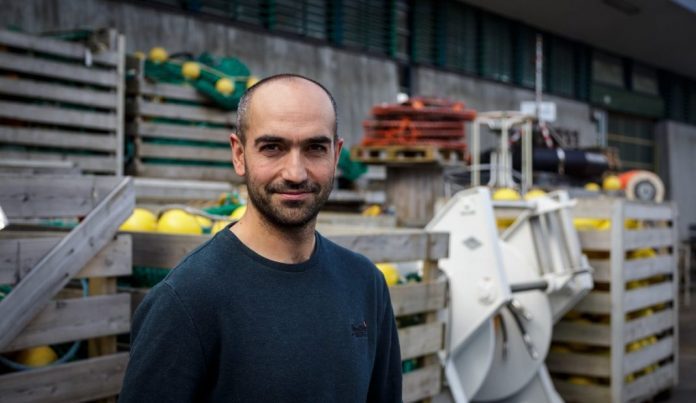The Institute of Marine Research will try something never before done in Norway.
“If we manage the critical point, to get the tuna into the transport cage, we will get to the rest,” said capture researcher Manu Sistiaga in an article published on a site connected with the project.
On September 20th, he and a team of research colleagues will board the fishing boat “Vestbris”. They will then try something never before done in Norway, with the very largest specimens of the world’s largest tuna: To get them into a sea cage.
“This is done with bluefin tuna in the Mediterranean, but in completely different conditions. There the fish are smaller, and come together to spawn,” the researcher explained.
In the past, a number of tuna have smashed salmon farm cages, most recently at a Mowi site in Haverøy, Western Norway. According to Mowi, the fish was sent to the Institute of Marine Research for testing.
Challenges
It is the largest individuals of 250-350kg, that lie to the northern outer boundary of Norway.
“As we have documented before, there are many challenges in today’s fisheries, particularly related to quality and profitability,” said Sistiaga.
The Norwegian Institute of Marine Research listed the following challenges:
- It is difficult to control how many or rather how few fish one of them catches at a time.
- It is complicated work to get the fish onboard and euthanise them effectively and gently. This affects the quality of the meat and price.
- The market is often filled with a lot of fish at the same time, which also gives fishermen lower prices.

6-step action plan
So-called live storage is a possible solution to these problems. But certainly no simple matter, according to The Norwegian Institute of Marine Research.
Their 6-step action plan involves finding and fishing for superfast tuna which are relatively close to shore.
“We have an experimental quota of up to six tonnes, which in practice means 20-30 fish,” explained Sistiaga.
Then, when fish are caught in a net, they hope the tuna will pass through a 12 meters long “tunnel” and make them enter a transport sea cage.
“And we have to do that without spinning the cage too much. Then the tuna can become stressed, wrap themselves in the tunnel wall and die,” said Sistiaga.
The researchers are to some extent at the mercy of the will and behaviour of the fish. But it may also be to their advantage.
“Bluefin tuna is a shoal fish. If one goes through, the rest will probably follow. We’ve toyed with the idea of using a fake tuna as we go through the channel,” he said.
The Atlantic Tuna Commission ICCAT which manages tuna quota has set strict requirements for documentation of fish to be stored in the sea cage. The transmission channel is therefore equipped with a stereo camera from Mohn Technology that will count the fish and measure their length as they pass.
At this point the fish, the cage will slowly be towed to shore.
While the transport cage is lightweight and foldable, the final storage cage is solid.
In case of the storage cage, the same procedure will be with pairing and transmission, but here at ease.
“Here too, the stereo camera will take aim at the fish. Do we get the same result, and do the fish have visible injuries or signs of stress? Those are the research questions,” Sistiaga said.
Analysis
The tuna will then be moved in the cage at the processors Domstein Sjømat for a short period before most are released. A small number of fish will be harvested with different methods to ensure quality, animal welfare and HSE.
If they get this far, scientists and fishmongers will eventually analyse the meat and compare the quality with the fish that are landed through commercial fisheries.

“Live storage is the future”
The scientist admitted that this is “an ambitious project” where many things could go wrong. “But we have to start somewhere” he added.
“Each phase has many research questions of our own, so even if we do not succeed with everything, we will learn something,” continued Sistiaga.
Sistiaga said that he believes live storage can provide more sustainable and profitable tuna fishing when it can supply the market steadily with top-quality fish.
“This could improve animal welfare, profitability, and perhaps make it easier to build up the Norwegian and European market for bluefin tuna,” said the researcher.

